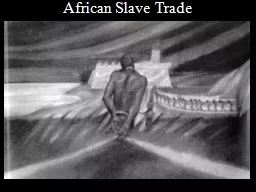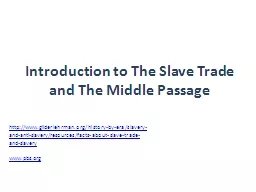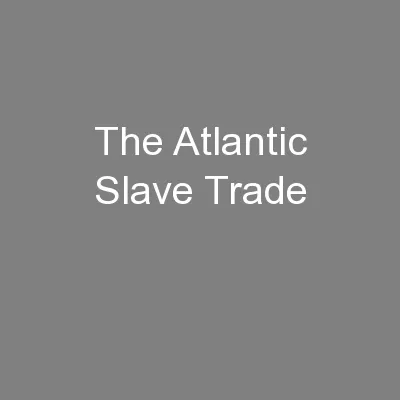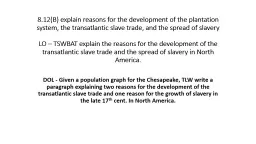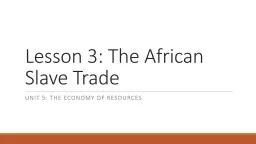PPT-African Slave Trade
Author : mitsue-stanley | Published Date : 2018-01-07
The Spanish and Portuguese had enslaved Africans to work in the sugar plantations on the islands off the coast of Africa As the rich lands of the Americas fell
Presentation Embed Code
Download Presentation
Download Presentation The PPT/PDF document "African Slave Trade" is the property of its rightful owner. Permission is granted to download and print the materials on this website for personal, non-commercial use only, and to display it on your personal computer provided you do not modify the materials and that you retain all copyright notices contained in the materials. By downloading content from our website, you accept the terms of this agreement.
African Slave Trade: Transcript
Download Rules Of Document
"African Slave Trade"The content belongs to its owner. You may download and print it for personal use, without modification, and keep all copyright notices. By downloading, you agree to these terms.
Related Documents

